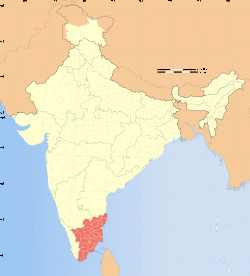Cyclone Nilam And The Cauvery Basin: Lessons Learnt – Analysis
By IPCS
By Roomana Hukil
On 30 October 2012, the Supreme Court directed the Cauvery Monitoring Committee (CMC) to examine and look into the plausible issues that are likely to stem out from Tamil Nadu and Karnataka on sharing of the already contested Cauvery basin. In the review meeting, the CMC commissioned Karnataka to release 5.5 tmcft to Tamil Nadu till 15 November 2012 on a daily basis. This article dwells upon the various abnormalities that emerge from the recent ecological developments, which are causing further malfunction in the Cauvery conundrum. It also looks extensively into the plausible impacts caused by cyclone Nilam in the context of the Cauvery issue.
Contending Arguments

The Cauvery water issue, thus-far prolonged, suddenly spurred into a matter of social justice and despair for millions in both states this year. The rain-fed river, depending on the vagary of the monsoons, has brought multiple contending arguments to the fore. Cyclone Nilam that largely struck in Tamil Nadu, destroyed cultivated crops due to the abnormal downpour. This imposed on Karnataka the need to give a logical explanation about its obstruction in releasing water to Tamil Nadu for reconstructive purposes. Subsequently, alarms are also posed at the latter questioning the essence of their stance on yearning for more water despite being engulfed in a flood bath. The CMC’s directive is further argued as being illogical in its vouching for the Tamil demands whereby it is accused of not taking ground realities into perspective.
All dams in the southern peninsula have a limited storage capacity. They have a live storage of 20.136 tmcft (approx) which is extremely meagre in comparison to the water receipts. With the inflow level doubling this year owing to the monsoons; the outflow rate has also significantly increased. For instance, the water level at KRS dam is 106.68 ft as against a maximum of 124.8 ft. It is receiving 1,446 cusecs water while the outflow is 1,490 cusecs. The water level at Kabini dam is 2,264.70 ft (maximum is 2,284 ft). The inflow is 819 cusecs and 102 cusecs are let out. At Harangi dam, the water level is 2,840 ft (maximum 2,859 ft) and receives 627 cusecs of water with no outflow. The level at Hemavathy dam is 2,898.30 ft (maximum 2,922 ft). Against an inflow of 955 cusecs of water, 350 cusecs are let out. This impinges the 1942 Doctrine of Community Interest and Equitable Apportionment Doctrine juxtaposing contradictory events.
These long-standing arguments raise another concern about the erratic period of occurrence of the dispute, with negligible differences of interest between the parties in the past five years. Such steady clashes between the Karnataka and Tamil Nadu state governments lead to severe delays in executing the official order, which affects the cultivation system. Karnataka kept raising voices against the jurisdiction of the Tribunal and Cauvery River Authority (CRAs) while Tamil Nadu sought legal recourse by appealing the Centre to intervene and urge Karnataka to abide by official directives. Reasonably, releasing the waterway is insubstantial at the moment; as the monsoons have arrived in Tamil Nadu. The downstream catchment area requires significant water supply for paddy and samba cultivation. However, due to insufficient number of dams, infrastructural facilities and a substantial deficit in water management techniques, Tamil Nadu is much likely to release excess water into the sea whereby not sufficing its needs and further banking on Karnataka to assist it. With a clash in interests, the CMC and Centre are expected to face grave challenges in mending these interwoven interests.
Cyclone Nilam: Respite or Enticement?
Although Cyclone Nilam wreaked havoc in the vast agricultural tracts of Tamil Nadu, it came as a blessing for Karnataka, having drastically reduced the pressure to release water from its Cauvery basin reservoirs to Tamil Nadu. Although predicting cyclonic path is tough, it garnered a generous and continuous flow of rain. If the spell continues for three consecutive days, it would be sufficient to tide over the present water crisis. However, it is not possible to predict the quantum of rainfall due to the cyclonic effect. With Nilam steered away by wind currents, the rainfall should have decreased. But crops are submerging due to water stagnation and heavy spells. In such a scenario, it is illogical that the CMC persuades Karnataka to release the stipulated amount of water. More so, the CMC suggested Tamil Nadu to file a statement regarding the demand for making good on the shortfall, and Karnataka has been asked to respond to this in two days.
No protests stirred in the Mandya or Mysore districts following the CMC verdict, owing to the cyclonic storm. The Committee that ordered Karnataka to release 5.93 tmc including approximately, 1.5 tmc of the shortfall in releases for the month of October, is quiet now. A ray of hope is administered with the Cyclone Nilam as it would assist authorities to wriggle out of the Cauvery conundrum. What needs to be highlighted is strengthening the weather forecast mechanism, rather than having the authorities adopt a wait and watch policy for the expected rainfalls to determine the final release of waters. Cyclone Nilam offers much respite in this regard, where a foreseeable unpleasant dispute was much precedented after the Committee’s order.
Roomana Hukil
Research Intern, IReS, IPCS
e-mail: [email protected]
